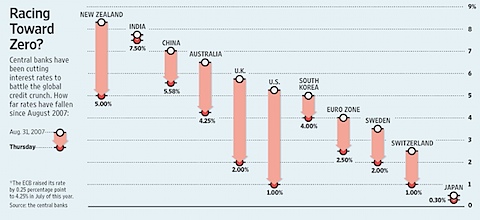I’ve thought of something that quite a few people may have overlooked. There is much gnashing of teeth amongst financial conservatives about the Federal Government (thinking about) bailing out GM and Ford.
The part no one seems to realize, is our government is already on the hook for their failures. Not via the lost votes, tax revenue, or general esteem of an American Institution failing… but rather via the bailed out banks.
Something like $1 trillion in CDS paper has been written against GM (CDS = insurance against bond default). It was sold by the likes of AIG, Bear Stearns, etc. It was bought by holders of GM bonds, also known as your pension, the bond funds in your 401k, and probably quite a few others.
So if GM were to fail, the sellers of insurance would have to pay up to make the bond holders whole… and what happens if AIG doesn’t have the money? Well, they’re effectively owned by the US government now, so it’s the taxpayer’s obligation to pay.
I’m starting to think that $50 billion thrown towards Detroit may be cheaper in the long term than settling on the CDS obligations of the partially socialized banks.
Of course, it would be nice to say that the government shouldn’t have bailed out AIG, but that decision has been long since made.
Propping up a zombie corporation like GM or Ford is going to be unhealthy for the economy as a whole… But then again, who really thinks that a $700 billion bailout is going to be healthy for the economy? In theory, we’re stopping a train wreck from getting worse, not preparing ourselves for long-term growth. We’ll keep sacrificing bit by bit to save next year, and pay for it in the next few decades.

